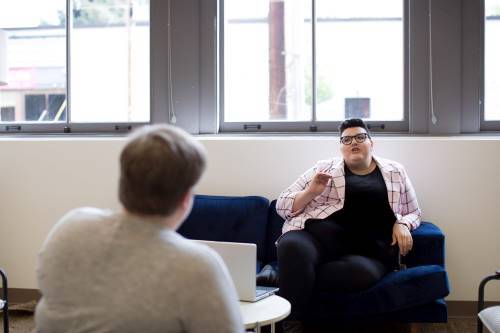Community treatment orders (CTOs)
Explains what a community treatment order (CTO) is, how it can affect you, and how you or your family members can change or end it.
View this information as a PDF (new window)
Recall to hospital from a CTO
When can I be recalled to hospital from a CTO?
You can be recalled to any hospital from a community treatment order (CTO) if your responsible clinician thinks you meet these criteria:
- You need medical treatment in hospital for your mental disorder.
- There would be risk of harm to your health or safety, or to others, if you are not recalled.
You can only be recalled if you meet both criteria. For example, you cannot be recalled just because you stop taking your medication. But if you stop taking your medication, and your responsible clinician thinks that you will get unwell, they can recall you.
Your responsible clinician can also recall you if you don't follow the two conditions attached to every CTO.
Example
Dionne has a diagnosis of bipolar disorder. One condition of her CTO is to let the community psychiatric nurse into her house to give her medication.
Dionne decides that she is better and doesn't need her medication. She stops letting her community psychiatric nurse into the house. Nobody sees her for two weeks, including the community nurse. They worry that Dionne is unwell. So her responsible clinician decides to recall her.
What happens if I am recalled to hospital from a CTO?
If you are recalled to hospital, you must first be given notice in writing. This can either be sent to you in the post or be given to you in person. The form the responsible clinician will use depends on whether you are in England or Wales:
- If you are in England, visit this CTO forms page on the UK Government website. Here you can find a copy of 'Form CTO3 section 17e: community treatment order, notice of recall to hospital' as a Microsoft Word document. This is the form they will use to give notice of your recall to hospital in England.
- If you are in Wales, visit this CP forms page on the NHS Cymru website. Here you can find a copy of 'CP3 - Section 20a - Report extending the community treatment period' as a PDF document. This is the form they will use to give notice of your recall to hospital in Wales.
In some cases, you can go to the hospital yourself. In others, the police or an ambulance will take you to hospital. You can also ask that someone comes with you, if you wish.
What will happen once I'm back in hospital?
Once you are back in hospital, they will complete a form with your details and the time your detention started. The form they will use depends on whether you are in England or Wales:
- If you are in England, visit this CTO forms page on the UK Government website. Here you can find a copy of 'Form CTO4 section 17e: community treatment order, record of patient's detention in hospital after recall' as a Microsoft Word document. This is the form they will use to record the details of your recall once you are in hospital in England.
- If you are in Wales, visit this CP forms page on the NHS Cymru website. Here you can find a copy of 'CP5 - Section 17e - Notice of recall to a hospital' as a PDF document. This is the form they will use to record the details of your recall once you are in hospital in Wales.
You can be kept in hospital for up to 72 hours. Your responsible clinician will see you and decide what the next steps are. You can be forced to have treatment if your responsible clinician thinks that you need it.
Your responsible clinician can then decide to either release you back to the community on the CTO or decide that you need to stay in hospital.
If you need to stay in hospital, your responsible clinician will revoke your CTO. You will be detained on your original section.
An approved mental health professional will need to agree to this, and the responsible clinician will need to complete a form. The form they will use depends on whether you are in England or Wales:
- If you are in England, visit this CTO forms page on the UK Government website. Here you can find a copy of 'Form CTO5 section 17f4: revocation of community treatment order' as a Microsoft Word document. This is the form they will use if your CTO is revoked and you are detained in hospital in England.
- If you are in Wales, visit this CP forms page on the NHS Cymru website. Here you can find a copy of 'CP7 - Section 17f - revocation of a community treatment order' as a PDF document. This is the form they will use if your CTO is revoked and you are detained in hospital in Wales.
See our information on sectioning to find out about what happens when you are detained in hospital.
Recalled
This means that you can be returned to hospital. It applies to you if you're on section 17 leave, on a community treatment order (CTO) or have been conditionally discharged from hospital.
- If you're on a CTO, you can be recalled for up to 72 hours if the responsible clinician thinks that:
you need medical treatment in hospital for your mental disorder, and - there would be risk of harm to your health or safety or to others if you are not recalled.
You must meet both criteria.
Visit our full listing of Legal TermsResponsible clinician (RC)
This is the mental health professional in charge of your care and treatment while you are sectioned under the Mental Health Act.
Certain decisions, such as applying for someone who is sectioned to go onto a community treatment order (CTO), can only be taken by the responsible clinician.
All responsible clinicians must be approved clinicians. They do not have to be a doctor, but in practice many of them are.
Visit our full listing of Legal TermsMental disorder
When the Mental Health Act talks about someone with mental health problems and whether or not they should be sectioned, it often uses the term 'mental disorder'. The Act says that this can include "any disorder or disability of mind".
Mental disorder can include:
- any mental health problem normally diagnosed in psychiatry
- certain learning disabilities.
Detained
A person is detained if they are being kept in hospital under section and are not free to leave.
Visit our full listing of Legal TermsApproved mental health professional (AMHP)
AMHPs are mental health professionals who have been approved by a local social services authority to carry out duties under the Mental Health Act. They are responsible for coordinating your assessment and admission to hospital if you are sectioned.
They may be:
- social workers
- nurses
- occupational therapists
- psychologists.
Section
Being 'sectioned' means that you are kept in hospital under the Mental Health Act. There are different types of sections, each with different rules to keep you in hospital. The length of time that you can be kept in hospital depends on which section you are detained under.
See our pages on sectioning for more information.
Visit our full listing of Legal TermsThis information was published in June 2022. We will revise it in 2025.
References are available on request. If you would like to reproduce any of this information, see our page on permissions and licensing.











